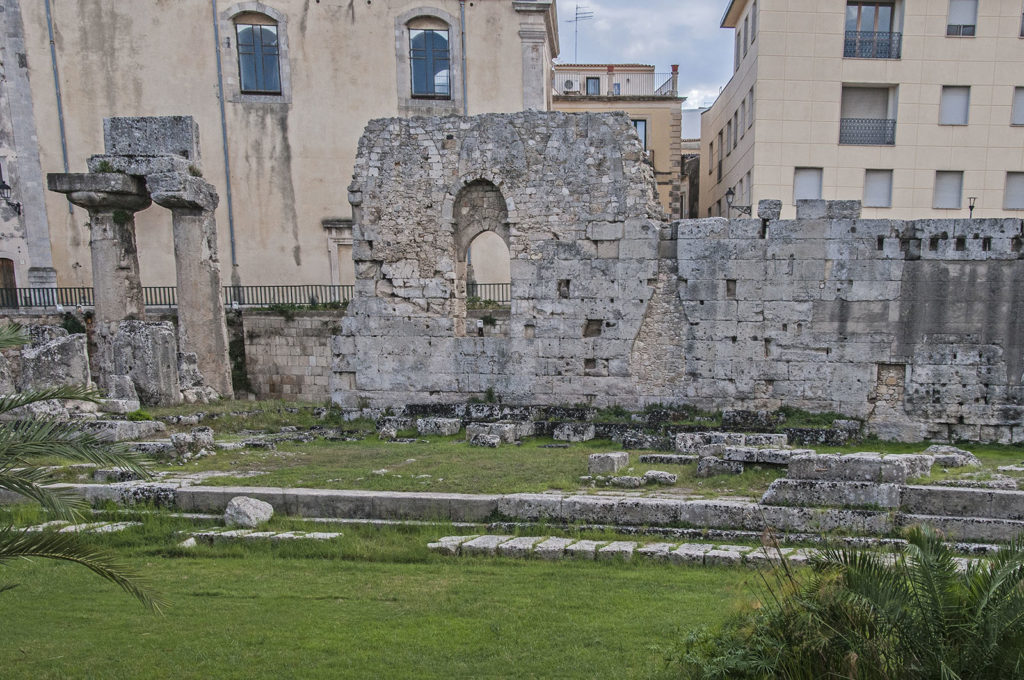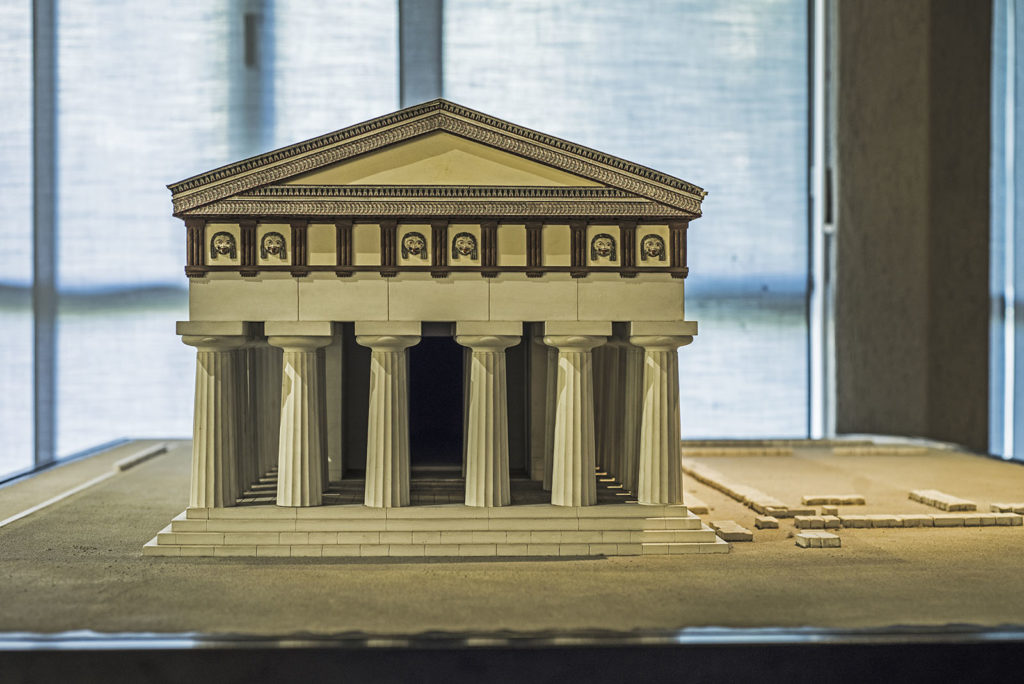In Ortygia, the air element is connected to Greek mythology, thanks to the presence of temples, sacred buildings dedicated to the Olympic gods.
According to Greek religion, the gods lived on Mount Olympus, a very high and unreachable mountain always shrouded in clouds.
The temple was where the gods were prayed to and rites and sacrifices were performed. This structure represented a place of union between heaven and earth: a place where humans came into contact with the Olympic gods through prayer, sacrifice and invocation.
Of all the majestic temples built in Ortygia, the Temple of Apollo, dedicated to the sun god, was one of the most important. The building was built in 565 BC. All that remains today are the remains of two columns and a wall that formed the “cella” (shrine).
 Originally there were many columns! The temple had a rectangular shape and six columns on the front and seventeen along the sides. The cella (shrine), on the other hand, was the room that housed the precious marble statue of the god Apollo.
Originally there were many columns! The temple had a rectangular shape and six columns on the front and seventeen along the sides. The cella (shrine), on the other hand, was the room that housed the precious marble statue of the god Apollo.
 Ceremonies took place outside, in front of the façade. Only priests had access to the temple. The roofs were made of wood and decorated with colourful terracotta.
Ceremonies took place outside, in front of the façade. Only priests had access to the temple. The roofs were made of wood and decorated with colourful terracotta.
At the top, above the roof or in the triangular space of the façade above the columns, you could find terracotta statues of knights, the winged sphinx, or the dreaded
gorgon
!